- Jun 20, 2024
- 6 min
Manage VR experiences with a Headless CMS
With the right CMS, everyone can manage Virtual Reality experiences. The first part of this post will be a high-level introduction to powering VR with a CMS. In the second part, I’ll get into the nitty-gritty of a working demo available on GitHub.
Magnolia in action
Take 12 minutes and a coffee break to discover how Magnolia can elevate your digital experience.
Manage VR Content
With app stores, such as the Meta Horizon Store, for example, having restrictive submission processes due to many rules and regulations that need to be met, brands can follow a more accessible path and publish their VR experience directly on their website.
VR experiences, once published to a website, can be managed with a headless CMS, just like a regular web page. The headless CMS allows marketers to integrate existing content and products into the VR experience.
Businesses from various industries can use VR to enhance customer experiences. Travel companies, for example, can help clients explore cityscapes, wild environments or historic landmarks.
The Virtual reality (VR) industry is growing at a fast pace, with both the end-user and enterprise segments adhering to what has surely become a mainstream phenomenon.
The global volume of VR headsets is estimated to grow from 23.6 million pieces in 2024 to 27.7 million pieces in 2029. That translates to 4.1 million headsets being sold in the next five years, and users have more options as Apple’s Vision Pro joins the successful Meta Quest line-up. The choices don’t stop here.
Now, let’s factor in the number of headsets from 2019: 5,51 million. With a growth of over 400% in 10 ten years, the VR landscape can indeed be called a phenomenon.
With such high engagement, businesses naturally want to get their brand on it. But on some VR devices, like the Meta Quest 2, Meta Quest 3, or Meta Quest Pro, the app store (called Meta Horizon Store starting August 5th, 2024) has some restrictions when it comes to submitting an app.
So, how can brands and companies get on board right now? With the web, of course.
You can publish a VR experience on your website with the exact same techniques you already use for normal webpages. That is because web browser support for VR is surprisingly good. People can experience your content in a VR headset, on a mobile phone, and even on a desktop computer (in a limited way).
Marketers and content teams can manage those experiences, just as they would a web page, with a headless CMS. No technical or software development knowledge is required. The point of a headless CMS is to provide a great user interface for anyone to create, manage, link and curate content. It both stores the content, and serves it via REST API’s to other systems or devices like a mobile app, or a React, Angular or Vue app on a web page.
In the same way, a VR experience can also grab content from these API’s.
You can manage text, images, marketing content, and advertisements in one or multiple languages. And because your VR app gets it all from your CMS, you can update it instantly, at any time. Your VR experience can integrate your existing content and products, as I’ll demonstrate in the example below. Beyond traditional web content, you can also manage VR-specific content like 360-degree photos & videos, complete 3D models, textures, environments, and game levels.
(By the way, these headless content management techniques also work for native VR apps, made for example in Unity or Unreal. But I’ll save that for another post.)
The VR Experience demo
Let’s explore how to create a web page as a VR Experience. Magnolia has a nice “block-based” editor called the Stories App. We use it for our blog posts on our website. It’s like the Medium editor, where you can keep adding blocks (images, text, or whatever) to the story. With that content, we can render a website page from the story (like the one you're reading right now).
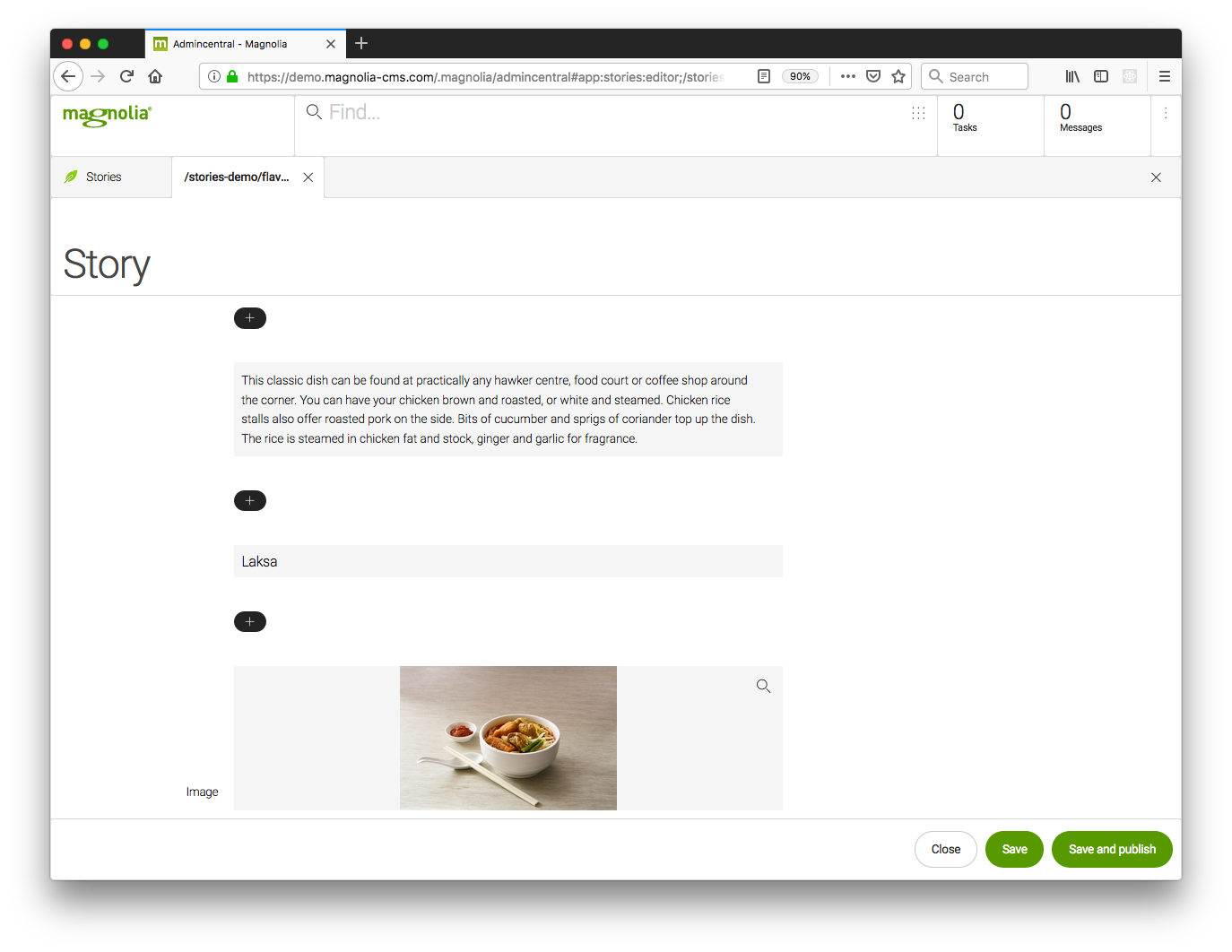
But the Stories App is designed to create content for every frontend. We always talk about it as “future-proof content” because you can use the story on all sorts of channels and devices, even ones that haven’t been invented yet.
The Stories App delivers its content via a REST API as a clean list of blocks. Our VR webpage parses the type of each block and outputs the appropriate markup. Et voila, with the help of the A-FRAME javascript library, the blog post is now delivered in VR.
OK, the level of acronyms IN ALL CAPS is increasing, let’s switch gears, leave the overview and jump into the technical side.
Do you want a personal Magnolia Headless CMS demo?
You're just steps away from getting started with Magnolia Headless CMS
Web VR browser APIs
Web browser support for VR is good. A WebVR spec was proposed in a draft but is now considered ‘legacy’ as it has been replaced with WebXR spec. WebXR has a big scope, it’s designed to provide APIs for “eXtended Reality”, it encompasses Virtual Reality and Augmented Reality, sometimes referred to as Mixed Reality. So ‘X’ can also be understood as ‘whatever you want to call it - this will handle it’.
In practice, I am impressed with how good browser support for VR is. Web developers can easily access the orientation and position of the headset and any connected controllers (I never knew my laptop had an orientation sensor!) and as far as displaying VR content, web browsers already have a very capable 3D graphics API - WebGL.
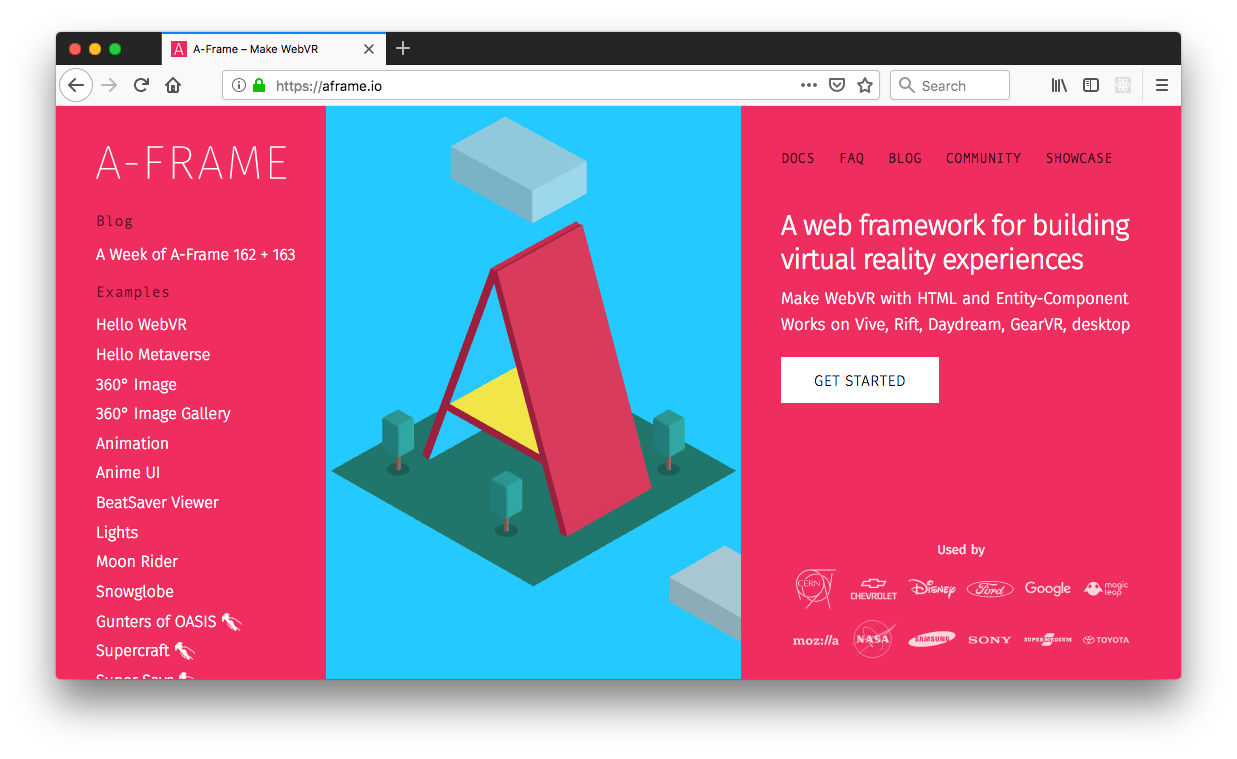
But best of all, there is A-FRAME for those who want to get started fast. It’s a Javascript library, which makes it a piece of cake to get going, yet it has the depth to support full VR use cases. It brings 3D rendering, but also the concepts of modern game engines (with an Entity-Component framework) to the web.
Under the hood, A-FRAME wraps another JS library, ThreeJS, which in turn leverages WebGL. It’s turtles all the way down. But never fear, all you have to do as a developer is create regular DOM nodes with some 3D properties, and today's amazing web and tech stack takes care of the rest.
Demo Details
I will describe the key aspects of creating a web page as a VR Experience.
Check out the VR Headless Demo Github project.
The entire project is in one file:
Setup the AFRAME DOM.
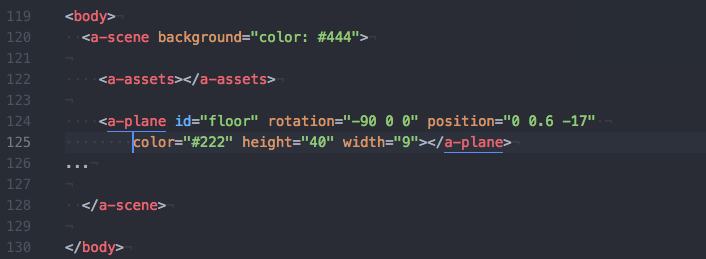
Use Axios to get the story content from the CMS REST endpoint.
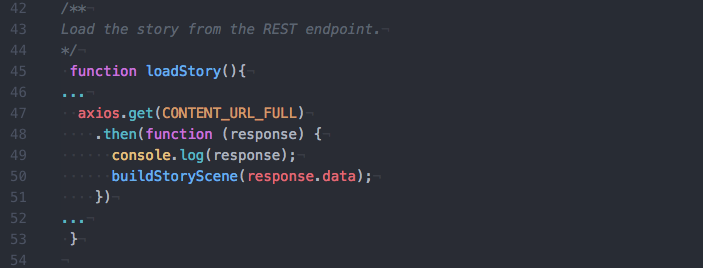
Loop through the blocks.
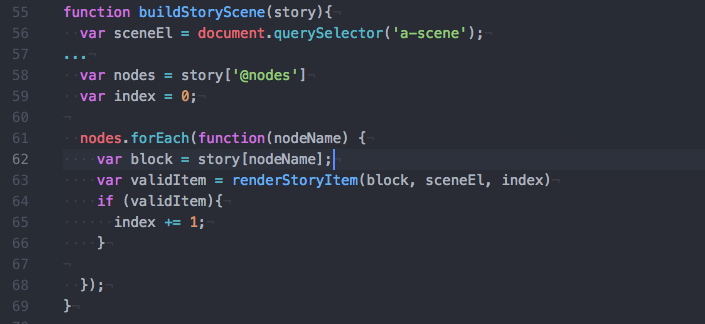
Create the element, and give it 3D coordinates based on a pre-defined “Wall array”: aWallLayout.
Add the block to the DOM with standard "appendChild()" syntax..

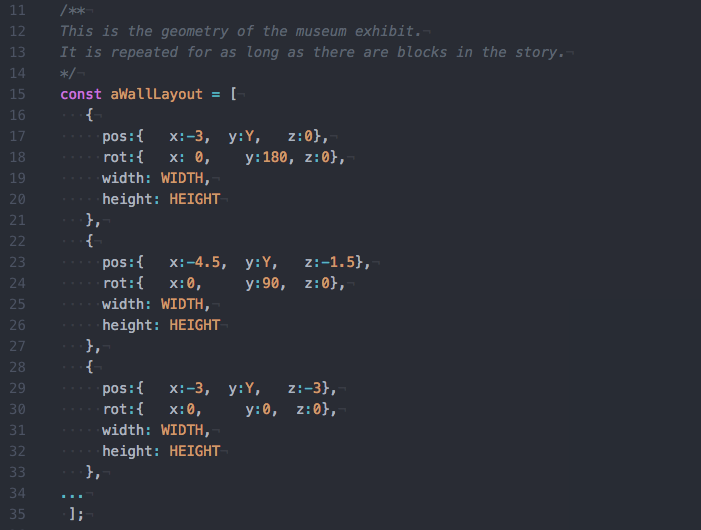
Render the appropriate block type, using A-FRAME attributes.

A-FRAME takes care of the rest.
To try it, clone the GitHub repo and try it out with a local Magnolia CMS server. The instructions are all in the repo. Or you can adapt it to work with another headless CMS if it supports the flexible blocks approach.
Conclusion
I hope I’ve been able to show you how easy it is to get into VR using the web. And also demonstrated the value of the headless CMS approach with an actual “future-proof content” use case. With it, your current content and marketing team can create and manage VR experiences.
Especially if you’re involved in “experience-driven ecommerce”, if you sell vacation packages or physical goods where a life-size virtual representation would help to communicate its value, or if you have a digitally savvy audience, I think VR is a good fit to help your business.









